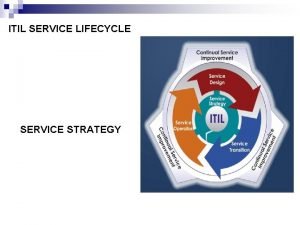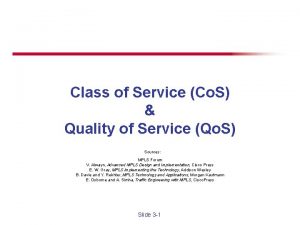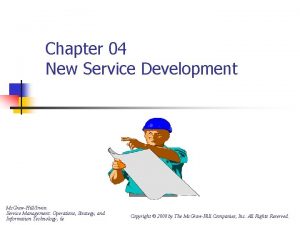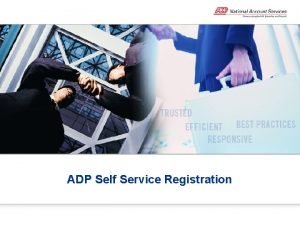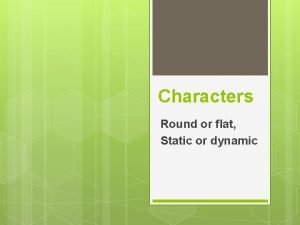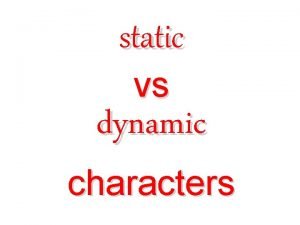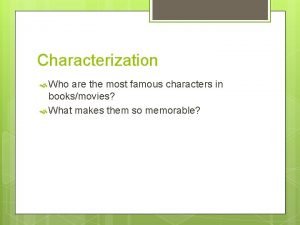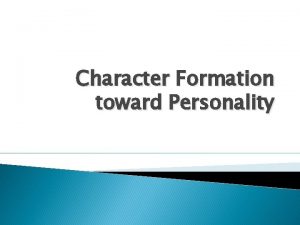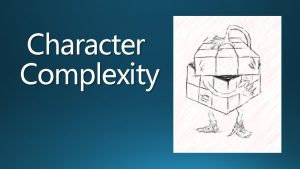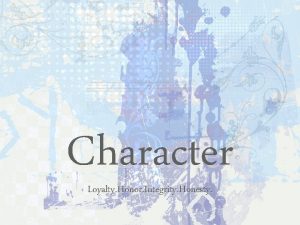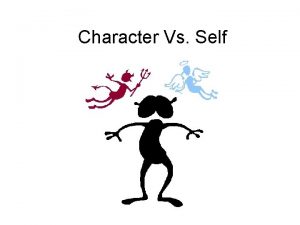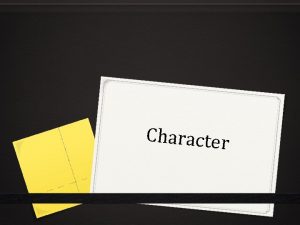Character and Service CH 2 1 Character and












- Slides: 12

Character and Service CH 2 -1

Character and Service • James Sipe and Don Frick identify “Seven Pillars of Servant Leadership” • One is to be a “person of character” • Sipe and Frick write that a person of character “makes insightful, ethical, and principle-centered decisions” and: • • is honest, trustworthy, authentic, and humble leads by conscience, not by ego is filled with a depth of spirit and enthusiasm is committed to a desire to serve something beyond oneself • Sipe and Frick, page 15

Is honest, trustworthy, authentic, and humble • How do these examples display an element of character in the context of service? • Cadre Squad Leader to a knob during Challenge week: “I’ll be honest with you, I wanted to quit too, but I stayed and I made it and I’m glad I did, and you can do it too. ” (honest) • TAC to a sophomore around rank board time: “I know you are a little uneasy about leaving your comfort zone but I hope you will trust me when I tell you that I think being a 1 SG would be a great developmental opportunity for you and a task I think you’re up for. ” (trustworthy) • Cadet to her roommate during Exam Week: “I’m just letting you know how I really feel. I’m worried that you aren’t spending enough time studying. ” (authentic) • PSG to his platoon after arriving a few seconds late to formation: “Sorry about that. Not setting a good example I know. ” (humble)

Leads by conscience, not by ego • The platoon sergeant and each of the three squad leaders are all equally bad at calling running cadence, but someone’s got to do it. • How does a platoon sergeant who “leads by ego” handle the situation? • How does a platoon sergeant who “leads by conscience” handle it? • What are the personal costs that the leader bears by leading by conscience in this case? • How is she showing character by bearing those costs? • How is she serving? • What are the short and long term impacts?

Is filled with a depth of spirit and enthusiasm • When the 101 st Airborne Division was surrounded at Bastogne, Brigadier General Anthony Mc. Auliffe sent his troops this optimistic and uplifting Christmas Eve message: • “What’s merry about all this, you ask? We’re fighting, it’s cold, we aren’t home. All true, but what has the proud Eagle Division accomplished with its worthy comrades of the 10 th Armored Division, the 705 th Tank Destroyer Battalion and all the rest? Just this: We have stopped cold everything that has been thrown at us from the North, East, South and West… Allied Troops are counterattacking in force. We continue to hold Bastogne. By holding Bastogne we assure the success of the Allied Armies… We are giving our country and our loved ones at home a worthy Christmas present and being privileged to take part in this gallant feat of arms are truly making for ourselves a Merry Christmas. ” “They’ve got me surrounded, the poor bastards!”

Is filled with a depth of spirit and enthusiasm • Optimistic leaders are “force multipliers” in their organization because their enthusiasm, hopefulness, and confidence encourages others to adopt the same positive outlook. • Leaders who display cynicism, doubt, and negativity are “force shrinkers” because they tend to demoralize, demotivate, and undermine the effectiveness of others. • Oren Harari, The Leadership Secrets of Colin Powell, (New York: Mc. Graw. Hill, 2002), 215 -216. • What is an example of a cadet leader being a “force multiplier”? How about a “force shrinker”? How are “force multiplier” leaders demonstrating leadership as service?

Is committed to a desire to serve something beyond oneself • The traditional, authoritarian leader asks, “What can the organization and its members do for me? ” • The servant leader asks, “What can I do for the organization and its members”? • How does a squad leader serve the cadets in his or her squad? • How does an Academic NCO serve a deficient cadet? • How does a cadet private serve the company? • How does a cadet serve The Citadel?

A Person of Character • Core competencies of a person of character • Maintains integrity • Demonstrates humility • Serves a higher purpose • Sipe and Frick, page 15

Maintains integrity • What does “integrity” mean? • What does it mean to “serve with integrity”? • How does a squad leader serve his or her squad with integrity while planning, preparing, executing, and assessing a MRI in terms of: • • Information dissemination? Expectations dissemination? Building subordinate skills? Taking into account subordinate’s experience and other situations? Setting subordinates up for success? Time spent on each subordinate? Technique for conducting the inspection? Administration of feedback and consequences?

Demonstrates humility • What does “humility” mean? • What does it mean to “serve with humility”? • How does a squad leader serve his or her squad with humility: • in an area he or she is strong in? • How can he or she use that strength to develop others? • How can he or she avoid showing off? • How can he or she act in a way that recognizes not everyone shares that strength (and the leader has weaknesses in other areas)? • in an area he or she is weak in? • How can he or she use that weakness to empower others? • How can he or she use that weakness to build a team? • How can he or she act in a way that shows value and appreciation for others who have this area as a strength?

Serves a higher purpose What does it look like when a squad leader “serves something beyond or greater than oneself” in the following situations? What does it look like when a squad leader “serves oneself” in the following situations? • When leading the squad as a whole • When helping a cadet with a personal problem • When giving a squad member feedback about a performance failure • When preparing for a CPFT

Next LTP • Your next LTP will be an individual response exercise • You will write a one page response to several prompts related to Sipe and Frick’s assertion that a person of character “is committed to a desire to serve something beyond oneself”
 Zones of tolerance are a source of desired expectations.
Zones of tolerance are a source of desired expectations. Soa architecture
Soa architecture Service v model
Service v model Itil service lifecycle stages
Itil service lifecycle stages 7 step improvement process itil
7 step improvement process itil Class of service vs quality of service
Class of service vs quality of service New service development
New service development Service owner vs service manager
Service owner vs service manager Help desk improvement plan
Help desk improvement plan My adp self portal
My adp self portal Difference between a round and flat character
Difference between a round and flat character Round or dynamic character
Round or dynamic character The most famous characters
The most famous characters



